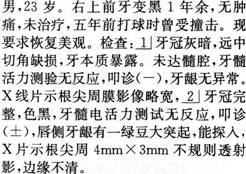共用题干
第一篇
Nonverbal(不用语言的)elements form a major part of any communication interchange. Som( people would say it's the most important part. According to one study,words convey only 7 percen of a person's message.Intonation and voice quality communicate 38 percent,and nonverbal cue, transmit a whopping 55 percent. That means people pick up more from nonverbal communicatior than from the words a person says.When studying about a foreign culture,then,it just makes sense to pay attention to how people use nonverbal cues.
Gestures comprise a major form of nonverbal communication. In contrast to sign language,usec by deaf people to communicate elaborate messages,gestures function as visual icons which represeni a single idea. But often these gestures are embarrassingly culture bound.For example,when the Maoris of New Zealand stick out their tongue at someone,it is a sign of respect. When American schoolchildren make the same gesture,it means just the opposite.Also,Americans often indicate "OK"with their thumb and forefinger touching to form a circle.The same gesture means"money" to the Japanese,"zero"to the French and a vulgarity to Brazilians.For that reason,people in a foreign culture must use gestures with caution.
Another cultural aspect of nonverbal communication is one that you might not think about: space.Every person perceives himself to have a sort of invisible shield surrounding his physical body.When someone comes too close,he feels uncomfortable.When he bumps into someone,he feels obligated to apologize.But the size of a person's"comfort zone"varies,depending on his cultural or ethnic origin.For example,in causal conversation,many Americans stand about four feet apart. In other words,they like to keep each other"at arm's length".People in Latin or Arab cultures,in contrast,stand very close to each other,and touch each other often.If someone from one of those cultures stands too close to an American while in conversation,the American may feel uncomfortable and back away.
People in a foreign culture must use gestures_________.
A:cautiously
B:with great care
C:with warnings
D:Both A and B are correct


 正确的诊断是
正确的诊断是 查看材料
查看材料

